Ryzen 4000 RAM Guide: Picking The Best RAM For Your Laptop
Intel had long dominated the laptop scene before the launch of AMD's Ryzen 4000 (codename Renoir) mobile processors. If you were on the market for a high-performance laptop, you ultimately ended up with an Intel-powered device. While AMD's competing mobile chips were good, their performance just wasn't up to par compared to Intel's offerings. The Zen 2 microarchitecture changed the picture, pushing the Ryzen 4000 processors to the top of both performance and value rankings. Thanks to Zen 2, consumers now have ample options to choose from when shopping for an everyday laptop, gaming laptop or mobile workstation.
Ryzen 4000 processors have a flexible memory controller that supports both DDR4-3200 or LPDDR4X-4266 memory. In the latter case, there really isn't a path for future upgrades because the memory is soldered to the motherboard. However, there are laptops with dual SO-DIMM slots that allow you to freely swap out the memory, and some others leverage a mixed design with a fixed amount of LPDDR4 memory and one empty SO-DIMM slot for expansion.
Buying a laptop isn't nearly as complicated as putting together a desktop PC, and no one can argue that. The customizable laptop options usually come down to the processor, memory, storage, and panel selections.
However, there is room for tuning. It has been known for some time now that APUs favor fast memory, and in this article, we'll see whether that tendency still stands with Ryzen 4000. Additionally, we'll look at the impact that memory ranks have on AMD's 7nm Ryzen Mobile chips.
XMG Core 15
The XMG Core 15 is a lightweight gaming laptop that doesn’t compromise on performance for portability. AMD's very capable Ryzen 7 4800H processor resides at the heart of the XMG Core 15. The octa-core chip rips through workloads with its eight Zen 2 cores that come with simultaneous multithreading (SMT) to expose 16 threads of computing power. The Ryzen 7 4800H operates with a 2.9 GHz base clock but has a boost clock that tops out at 4.2 GHz.
The XMG Core 15 is equipped with two DDR4 SO-DIMM memory slots, converting it into the perfect mobile platform for memory testing. The gaming laptop supports up to 64GB of memory, while the Ryzen 7 4800H provides native support for memory frequencies up to DDR4-3200.
In a gaming laptop, the graphics card is just as important as the processor. Although the Ryzen 7 4800H has a capable iGPU, Nvidia’s GeForce RTX 2060 Refresh (110W) graphics card takes care of all the graphical workloads on the XMG Core 15. With its 1,920 CUDA cores and 6GB of GDDR6 memory, the Ampere-powered graphics card delivers decent framerates across the laptop’s beautiful Full HD (1920 x 1080) IPS panel that flaunts a speedy 144 Hz refresh rate.
Get Tom's Hardware's best news and in-depth reviews, straight to your inbox.
G.Skill Ripjaws DDR4 SO-DIMM
G.Skill is widely considered a fan favorite when it comes to high-performance desktop memory and often gets on our Best RAM list. What many might not know is that G.Skill also has a formidable SO-DIMM portfolio. In fact, the Ripjaws SO-DIMM series of memory kits is easily one of the most balanced and pocket-friendly lineups in the memory market.
G.Skill offers the Ripjaws SO-DIMM memory with frequencies that span from DDR4-2133 up to DDR4-3200 with very decent timings and capacities ranging between 16GB and 64GB. The memory is available as a single module or in a dual-channel package, both of which come backed with a limited lifetime warranty.
Memory Scaling



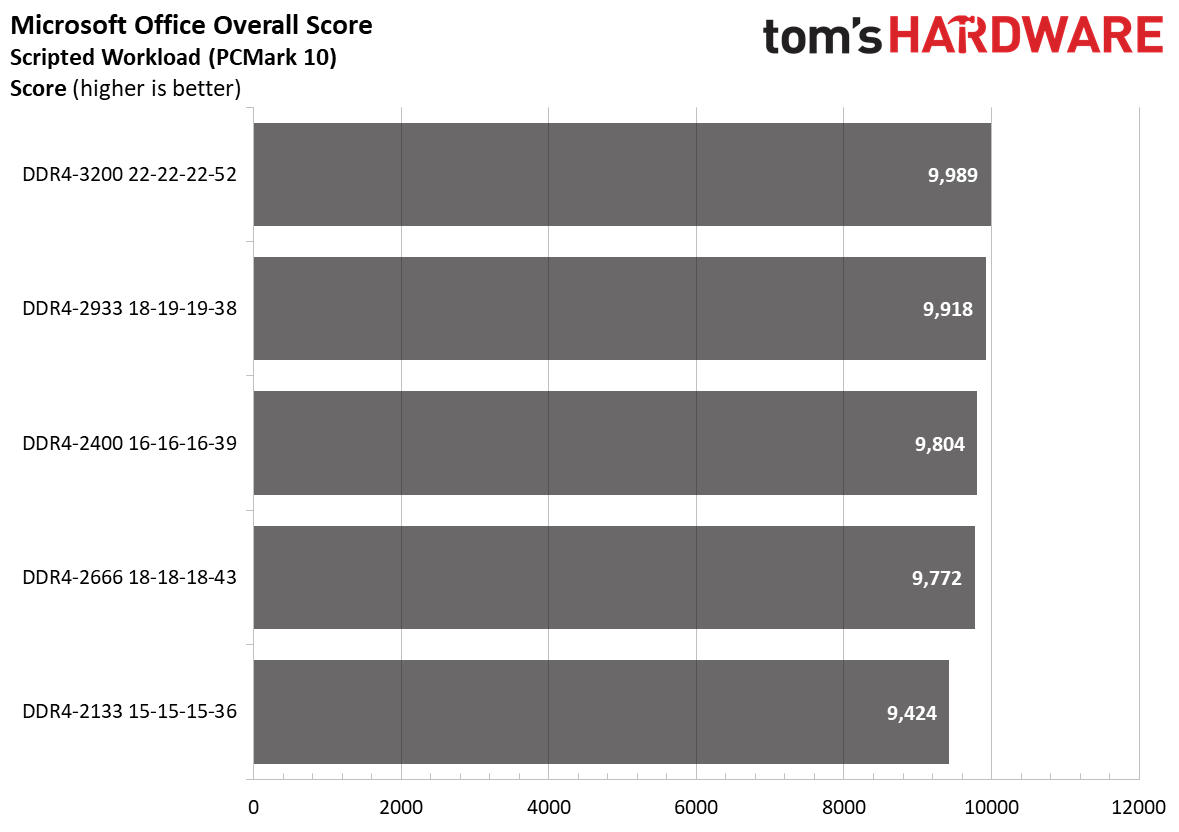









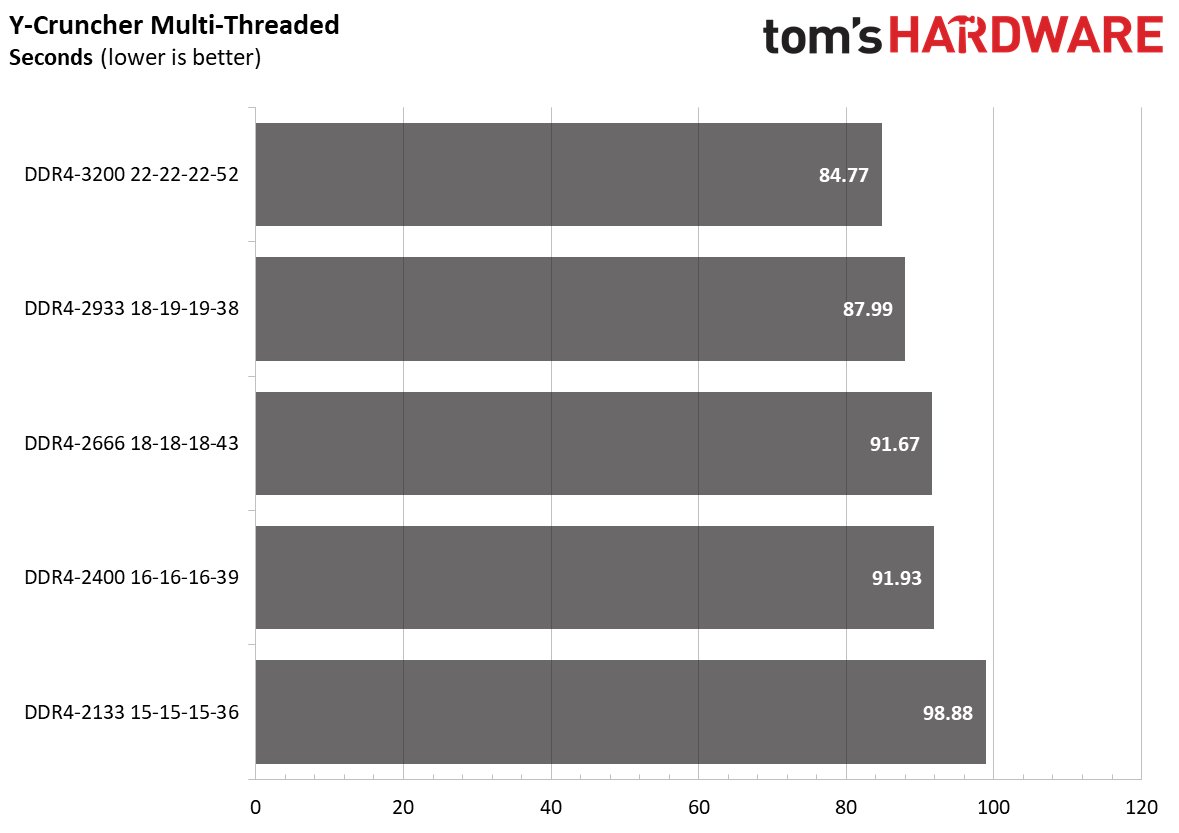
Boosting memory throughput leads to tangible performance gains. Moving from DDR4-2133 to DDR4-3200 netted an overall performance gain of up to 5.3%. We also saw more significant individual performance boosts, depending on the workload or RAM benchmark. In Microsoft Office, for example, DDR4-3200 delivered up to 6% more performance than DDR4-2133.
We recorded 7.6% more performance in Photoshop with the Adobe application suite but only recorded a 4.9% gain in Premiere by stepping up to DDR4-3200 over DDR4-2133. In 7-Zip compression workloads, DDR4-3200 offered a 7.9% increase in performance. Surprisingly, memory frequency didn't influence encoding workloads substantially as the performance boosts were below 4%.
In the memory-intensive y-cruncher application, bumping speeds up to DDR4-3200 helped decrease calculation times by 14.3%.
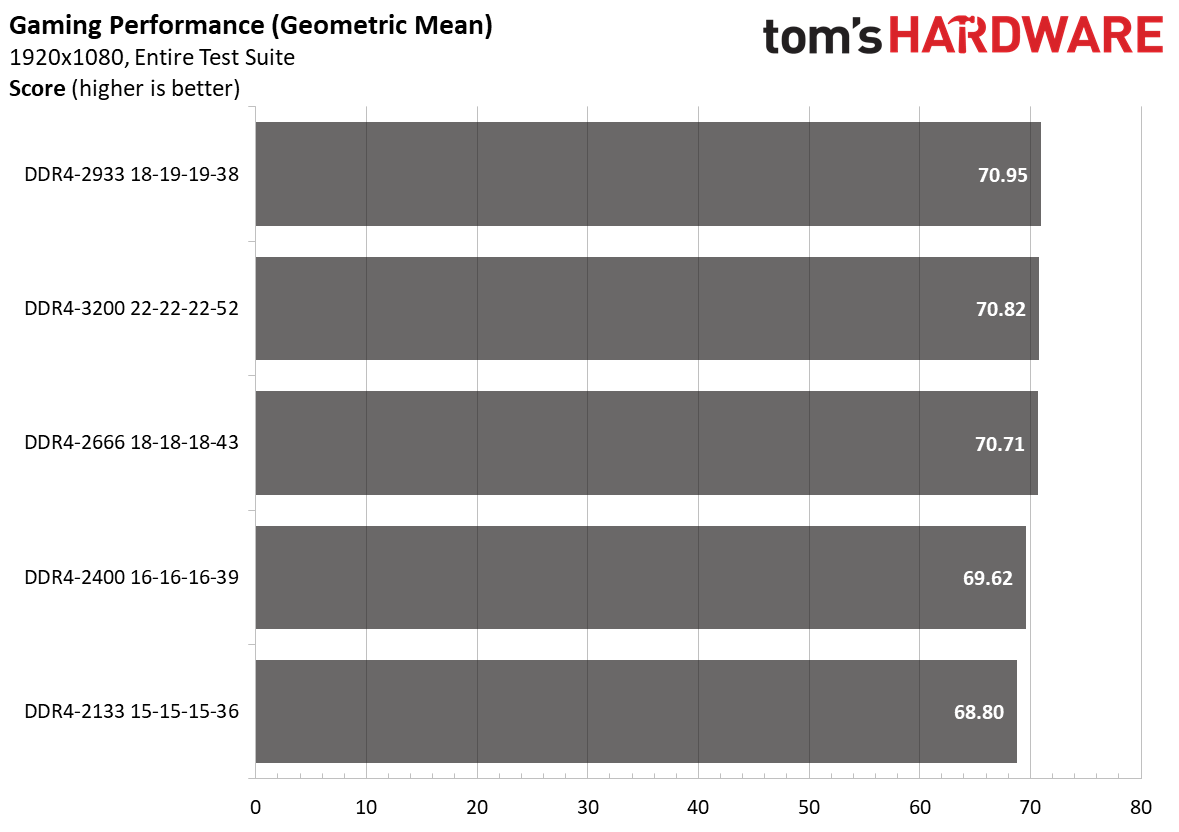

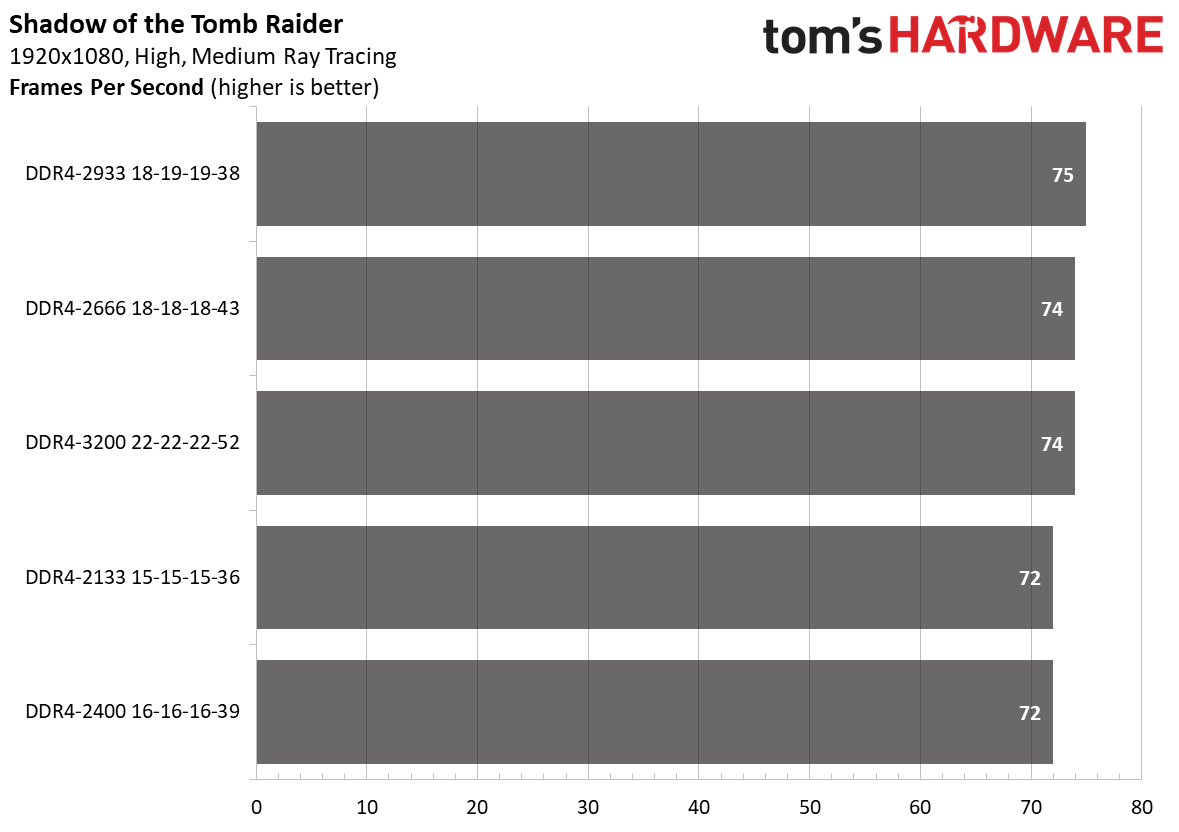


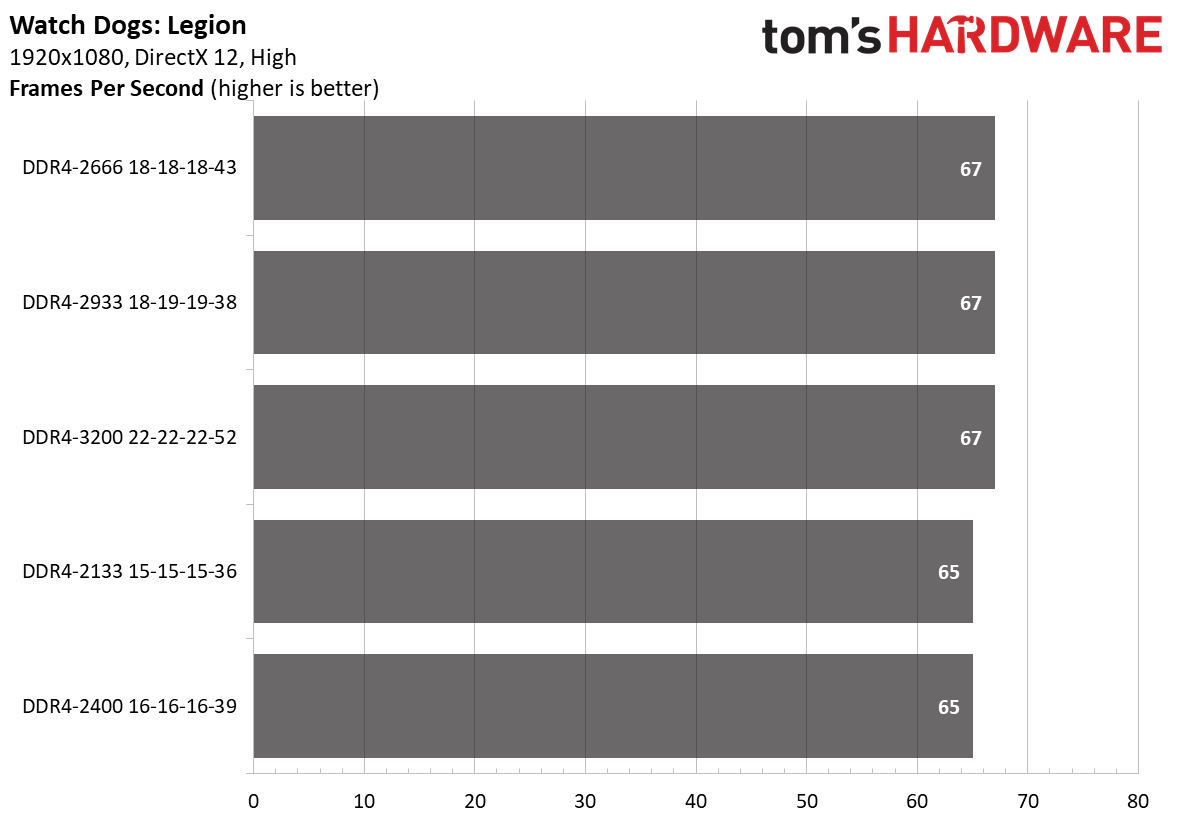

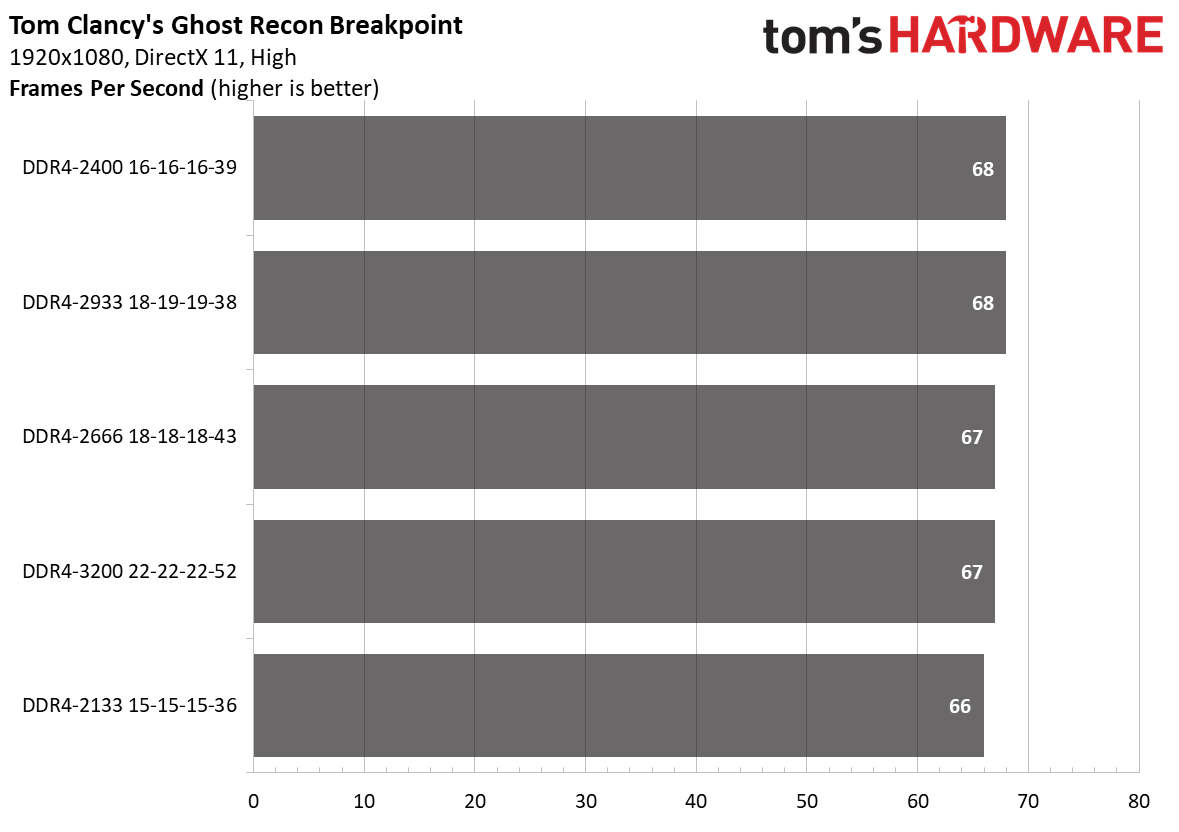
Overall, memory frequency had a small impact on gaming performance, at least with our test configuration (Ryzen 7 4800H + GeForce RTX 2060), image settings (High), and resolution (1920 x 1080). Jumping from DDR4-2133 to DDR4-3200 only gave us a 3.1% increase in average framerates.
Faster memory does become more of a factor in CPU-intensive titles, though. Take Far Cry New Dawn, for example. With DDR4-3200 memory, framerates jumped 10.4% over the DDR4-2133 configuration.
| Data Rate | Price | Value (Price/Geometric Mean) | Geometric Mean | Primary Timings |
|---|---|---|---|---|
| DDR4-3200 | $74.99 | $0.11 | 668.10 | 22-22-22-52 |
| DDR4-2933* | $107.56 | $0.16 | 657.60 | 18-19-19-38 |
| DDR4-2666 | $74.99 | $0.12 | 651.97 | 18-18-18-43 |
| DDR4-2400 | $64.99 | $0.10 | 650.21 | 16-16-16-39 |
| DDR4-2133 | $69.99 | $0.11 | 634.59 | 15-15-15-36 |
*HyperX Impact HX429S17IB2K2/16
If you're on a limited budget, DDR4-2400 offers the best bang for your buck in application performance. If you're the type that doesn't like leaving performance on the table, DDR4-3200 delivers the best performance for Ryzen 4000 mobile processors. It's no surprise that memory pricing is very volatile, but at the time of writing, the pricing delta between the slowest and fastest Ripjaws DDR4 SO-DIMM memory kit is minimum. Therefore, it makes sense to purchase the fastest kit because the difference between a DDR4-2133 and a DDR4-3200 memory kit is only $5.
Obviously, the timings for our memory test kits should only serve as a baseline. Memory kits with tighter timings will ultimately provide even better performance than the numbers you see in our tests. However, a word of caution: Many of the memory kits with tight timings require XMP activation and/or a 1.35V DRAM voltage - neither of which is supported on the Ryzen 4000 processors. You'll need to do your homework to make sure you don't pay a premium just to have an incompatible memory kit that runs with looser timings than advertised.
Single-Rank vs. Dual-Rank
Now that we've established that DDR4-3200 is the best memory frequency for performance, let's look at how the number of memory ranks influences performance.
Ryzen 4000-powered laptops typically come with a pair of DDR4 SO-DIMM memory slots, unless it's a hybrid with one soldered memory emplacement and one empty slot. That means four memory ranks are the maximum number you can squeeze into a device, which is possible by combining two dual-rank memory modules.



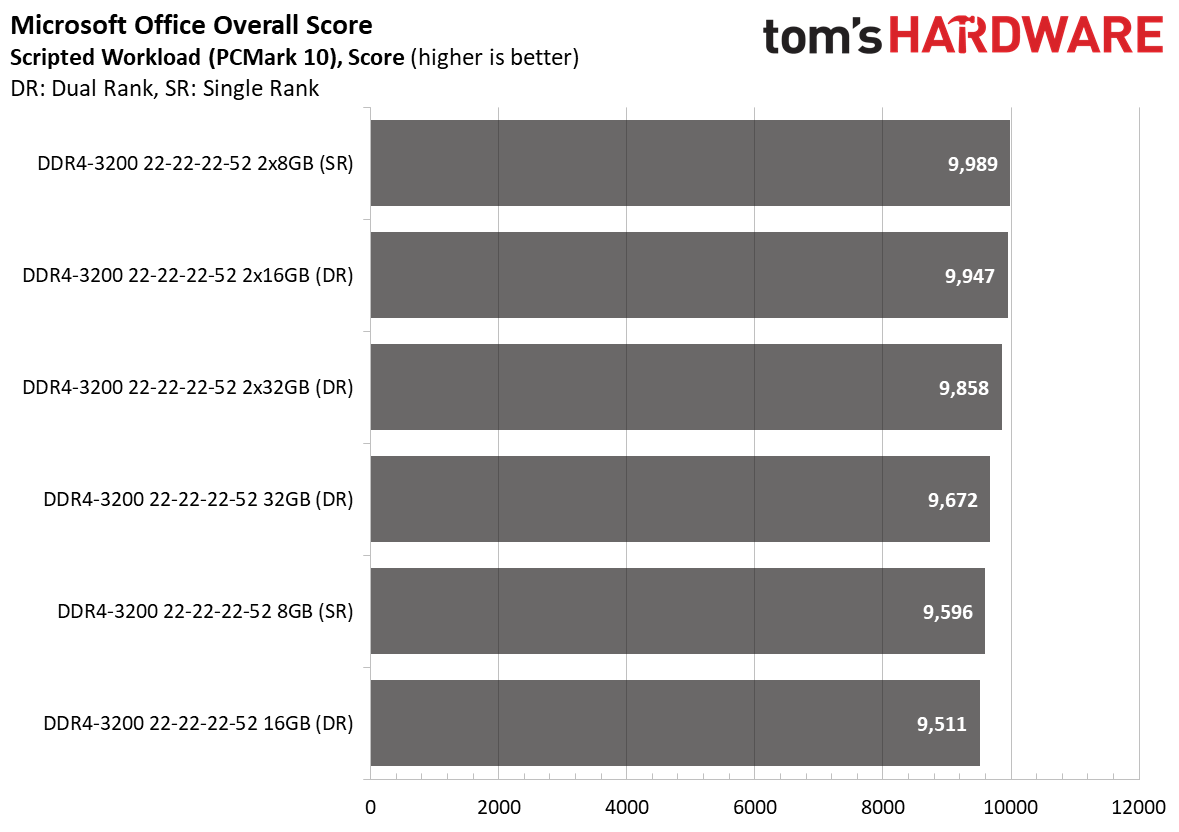





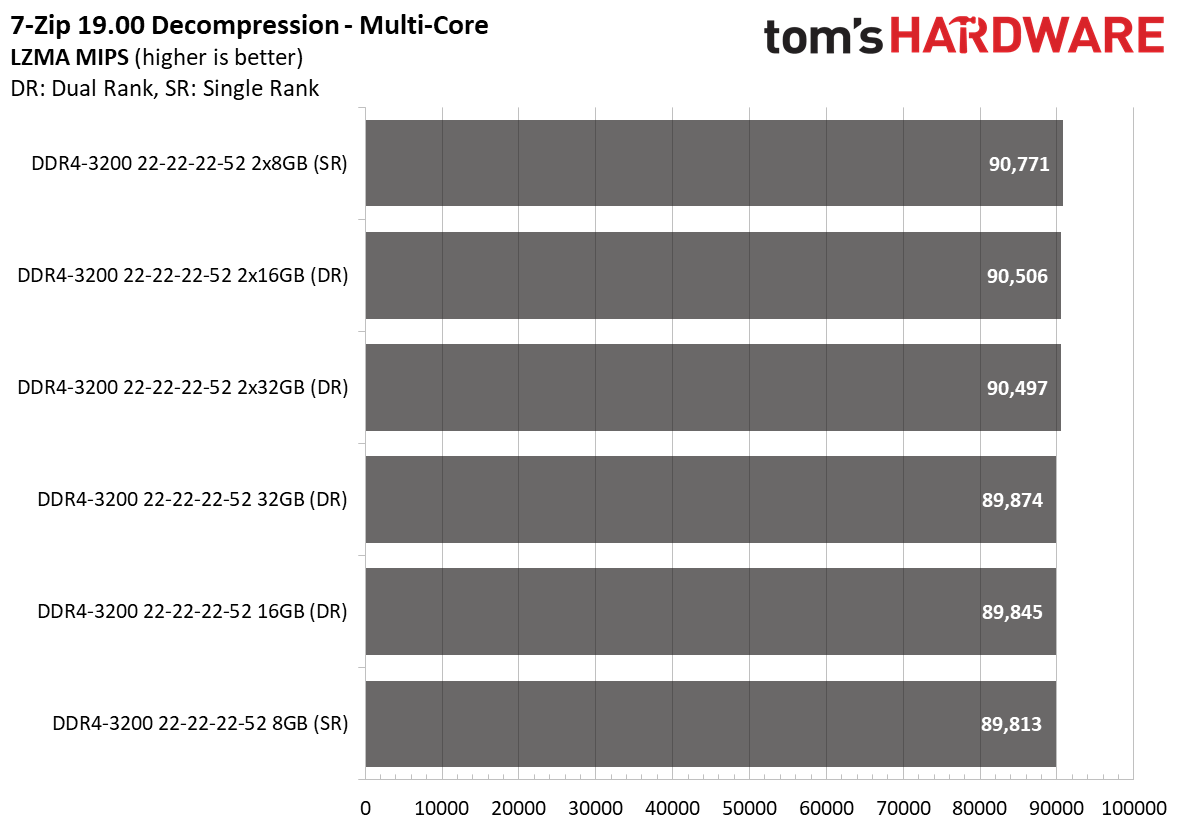




Some workloads are more impacted by memory capacity than others, and due to difficulties sourcing a single-rank 16GB memory kit with comparable timings to our dual-rank 16GB module, you'll need to bear in mind that we have a capacity mismatch for those comparisons. Take it into consideration that when you examine the results below that this increased capacity can lead to higher performance in a few of the applications, like Photoshop and Premiere, but the majority of the tests aren't as sensitive to memory capacity.
In our cumulative measurement of performance, a single 16GB (dual-rank) memory module provided 7.5% more overall performance than an 8GB (single-rank) memory module, but remember that memory capacity also plays a role. The performance increase is more pronounced in specific workloads, though. For instance, the 16GB memory module delivered 17.6% more performance in Adobe Photoshop than the single-rank memory module. While the increased number of ranks contributes to this performance increase, increased capacity also plays a role in this specific benchmark.
Dual-channel operation helped improve performance too. The 2x8GB setup was 10.9% faster than the single 16GB memory module. Both configurations totaled up to two memory ranks, but dual-channel mode was the most significant differentiator.
As we've mentioned previously, having more memory helps in certain workloads and obviously allows for more heavy multi-tasking. However, the overall performance uplift wasn't amazing. Overall, the 2x16GB and 2x32GB configurations were only 3.5% and 3.4% faster, respectively, than the 2x8GB configuration. Nevertheless, there were times when the 2x16GB setup outshined the 2x8GB memory kit, like in Adobe Photoshop and 7-Zip compression, where the first pulled ahead by 10.9% and 8.3%, respectively, but memory capacity also becomes a factor here.

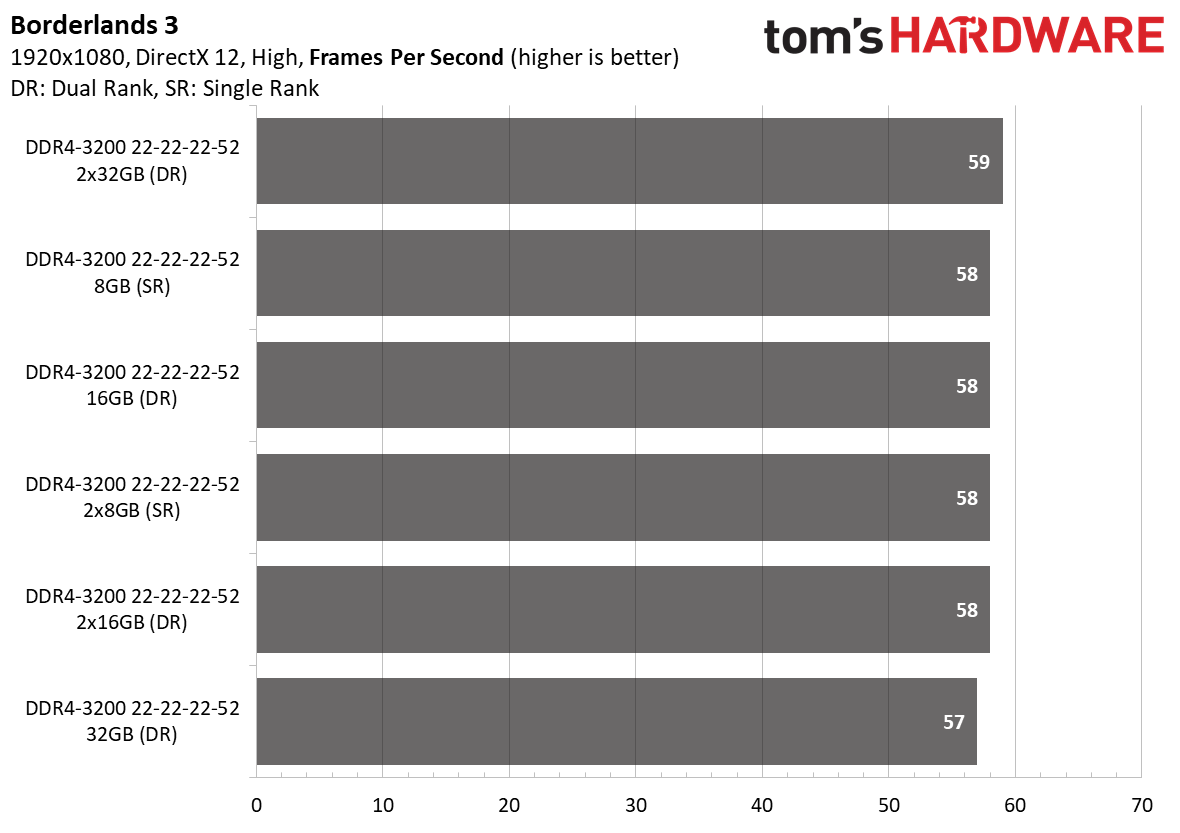






We noticed similar behavior with gaming. Individually, the 16GB memory module only delivered 3.7% higher performance than the 8GB memory module. However, in dual-channel mode, gaming performance with the 2x8GB configuration jumped 11.7% over the 8GB memory module and notched a 7.7% gain over a single 16GB memory module.
As expected, higher capacity and more memory ranks offered negligible performance uplifts in gaming. The performance delta between the 2x8GB, 2x16GB and 2x32GB configurations was less than 1%.
Our Key Takeaways
- Fill your memory slots. Unless you have a very strict budget, always equip your Ryzen 4000-based laptop with a dual-channel memory kit instead of a single memory module. Aim for a 2x8GB configuration as a minimum.
- DDR4-3200 is king. Depending on the variations in memory pricing, DDR4-2400 will likely offer more bounce for your ounce. If you're after the ultimate performance, however, stick with DDR4-3200.
- We want low timings. Tight timings are always better and will provide bigger performance gains. However, make sure the memory kit doesn't require you to activate XMP or pulls 1.35V to hit the advertised timings.
- Dual-rank over single-rank any day. We achieved the best performance with a DDR4-3200 2x16GB memory kit. Be careful with 16GB memory modules, though. We've seen some that feature a single-rank design instead of dual-rank. When in doubt, consult the specification sheet or hit up the vendor.

Zhiye Liu is a news editor, memory reviewer, and SSD tester at Tom’s Hardware. Although he loves everything that’s hardware, he has a soft spot for CPUs, GPUs, and RAM.
-
jpe1701 Hey guys I don't know if anyone else has said anything but on my android tablet with chrome when you put one of those scrolling ads in the middle of the article it ends up covering part of the article after I scroll down.Reply -
Diabl0 How come there are no tests of 4+4GB and 4+8GB memory configurations on AMD and Intel laptops? Most todays laptops come with 4GB of RAM solderd to the mainboard, so how does an upgrade to 12GB affect performance?Reply

